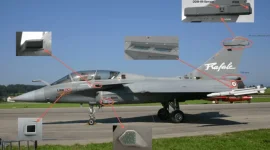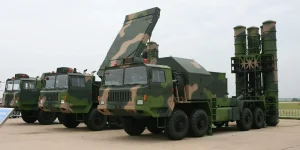- Views: 6K
- Replies: 11
The Indian Air Force (IAF) has significantly enhanced its aerial combat capabilities with the introduction of the French-made Dassault Rafale fighter jet equipped with the advanced Meteor missile.
This combination is changing the dynamics of air power in South Asia, providing India with a substantial advantage, particularly against potential threats from Pakistan.
Often compared to a sniper due to its exceptional range and precision, the Rafale armed with the Meteor allows the IAF to engage targets effectively from long distances.
The Rafale Aircraft: A Modern Addition
India acquired 36 Rafale jets through an agreement with France signed in 2016, valued at roughly ₹58,000 crore (approximately €7.8 billion).The Rafale is classified as a 4.5-generation fighter, indicating it incorporates advanced technologies compared to older aircraft but is not a full stealth platform like 5th-generation jets.
These twin-engine, multirole aircraft are known for their versatility and combat effectiveness.
The IAF has stationed these jets strategically, with squadrons based at Ambala airbase to cover the western front near Pakistan and at Hasimara airbase for the eastern border with China.
India's Rafales include specific upgrades, such as improved capability to operate from high-altitude airfields and advanced helmet-mounted targeting systems.
Versatile Capabilities and the Meteor Edge
The Rafale is described as an "omnirole" aircraft, capable of performing various missions simultaneously, including air defence, ground strikes, reconnaissance, and electronic warfare.It features sophisticated systems like the Thales RBE2 Active Electronically Scanned Array (AESA) radar, which offers superior target detection and tracking, and the SPECTRA electronic warfare (EW) suite for self-protection and jamming enemy systems.
While these features make the Rafale a powerful aircraft on its own, its pairing with the Meteor Beyond-Visual-Range Air-to-Air Missile (BVRAAM) significantly amplifies its lethality, especially in the context of regional air forces.
The Meteor Missile: A Class Apart
Developed by the European consortium MBDA, the Meteor is widely considered one of the world's most capable air-to-air missiles.What sets it apart is its ramjet propulsion system. Unlike traditional missiles that burn fuel quickly, the Meteor's ramjet allows it to control its speed, cruising efficiently before accelerating up to Mach 4.5 (over four times the speed of sound) in the final attack phase. This ensures the missile retains high energy even at extreme distances, reportedly exceeding 150 kilometres (some sources suggest up to 200 km).
Crucially, its "No-Escape Zone" (NEZ) – the area within which a target cannot realistically expect to evade the missile – is estimated at 60-80 km, significantly larger than competitors like the American AIM-120C AMRAAM used by Pakistan's F-16s or the Chinese PL-15 missile deployed on PAF's JF-17 Block III and J-10C aircraft.
Achieving 'First-Shot, First-Kill'
The large No-Escape Zone of the Meteor missile is a critical factor. Experts suggest this zone is roughly 2.5 to 3 times larger than that of many other air-to-air missiles, making evasion extremely difficult even for agile fighter jets.Combined with its advanced seeker head, secure data link, and resistance to electronic jamming, the Meteor provides IAF Rafales with a high probability of achieving a "first-shot, first-kill".
This means Rafale pilots can detect, target, and destroy enemy aircraft from well outside the engagement range of their adversaries' missiles.
Precision Advantage in a Regional Context
In any potential confrontation with Pakistan, the Rafale-Meteor system offers several tactical advantages, operating with sniper-like efficiency:- Standoff Engagement: The Meteor's extensive range allows IAF Rafales to target Pakistan Air Force (PAF) jets like F-16s, JF-17s, or the newer J-10Cs long before these aircraft can get close enough to use their own primary missiles (AIM-120C range approx. 100-120 km; PL-15 range often cited around 140-150 km). Rafales could potentially engage PAF patrols from within Indian airspace. This capability was highlighted as a potential game-changer following the 2019 Balakot airstrike and subsequent aerial skirmishes.
- Dominating the No-Escape Zone: The superior NEZ makes it highly probable that a Meteor missile launch will result in a kill, even against manoeuvrable aircraft like the JF-17. The Rafale's advanced radar and EW systems further assist in guiding the missile accurately.
- Force Multiplication: A single Rafale can carry multiple Meteor missiles (often alongside shorter-range MICA missiles), enabling it to engage several enemy aircraft in one mission. This helps offset potential numerical disadvantages.
- Enhanced Survivability: While not a full stealth fighter, the Rafale incorporates design features and the SPECTRA system (which can jam and confuse enemy radar) to reduce its detectability. This allows it to approach and launch missiles with a lower chance of being detected first, similar to how a sniper operates from cover.
- Deterrent Effect: The presence of the Rafale-Meteor system acts as a significant deterrent, influencing the tactical calculations of potential adversaries. Reports suggest the PAF has acknowledged this advanced threat.
Comparing Air Assets
The Pakistan Air Force operates F-16s (using AIM-120C missiles) and JF-17s (with Block III variants capable of using the PL-15 missile), alongside newly inducted J-10C fighters (also likely using PL-15).While the Chinese PL-15 missile has a long stated range, analysts debate its effectiveness against highly agile fighters compared to the Meteor, whose ramjet ensures sustained power throughout its flight.
Furthermore, the Rafale possesses a more integrated sensor and electronic warfare package and has combat experience from operations in other regions.
Unverified reports from a 2021 exercise involving JF-17s and Qatari Rafales claiming PAF success are generally discounted by IAF experts citing the Rafale's overall technological superiority.
Strategic Considerations and Future Outlook
Despite the Rafale-Meteor's formidable capabilities, the IAF operates a relatively small fleet of 36 Rafales, which could be stretched in a prolonged or two-front conflict scenario.Pakistan continues to induct JF-17s and potentially benefits from closer defence ties with China. However, the Rafale's strategic value is also enhanced by its ability to carry long-range cruise missiles like the SCALP (with a range over 300 km), allowing for deep strikes into enemy territory while the Meteor ensures air dominance.
India is also pursuing indigenous missile programs, like the Astra series, to equip other IAF fighters with advanced BVR capabilities.
Conclusion
The Indian Air Force's Rafale jet, armed with the Meteor BVRAAM, represents a significant leap in aerial combat capability, acting like a 'sniper in the sky'.Its ability to strike precisely from long distances with a high kill probability, particularly due to the Meteor's unique ramjet engine and large no-escape zone, provides a distinct advantage over Pakistan's current air assets.
This combination serves as a potent deterrent and reshapes the air power balance in the region, presenting a substantial technological challenge for potential adversaries.



